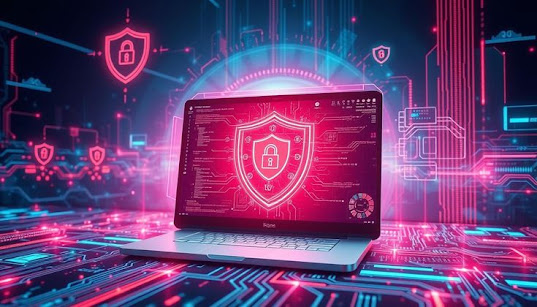Cyber Hygiene For Smart Homes: Securing IoT Devices In 2025
Cyber Hygiene for Smart Homes: Securing IoT Devices in 2025
The Internet of Things (IoT) has rapidly evolved from a futuristic concept to an everyday reality. In 2025, homes are more connected than ever, with devices ranging from smart fridges and lights to security cameras and AI-driven assistants. While these innovations offer convenience and efficiency, they also introduce significant cybersecurity risks. Ensuring good cyber hygiene is no longer optional—it’s a critical responsibility for every smart homeowner.
1. The Rise of Smart Homes in 2025
Smart homes in 2025 are driven by interconnected systems designed to improve quality of life. Voice-controlled thermostats, lights that adjust based on your mood, smart locks, and even refrigerators that suggest recipes based on contents are now common. However, the more devices you connect to your network, the larger your attack surface becomes.
Every connected device potentially opens a new door for cybercriminals to exploit. A single vulnerability in a smart doorbell or thermostat can compromise the entire network, leading to privacy invasions, data theft, or even physical intrusion.
2. Understanding Cyber Hygiene
Cyber hygiene refers to the practices and steps users take to maintain system health and improve online security. Much like personal hygiene prevents illness, cyber hygiene helps prevent cyber attacks. It includes routine tasks such as updating software, changing passwords, and monitoring device access.
In a smart home environment, cyber hygiene extends to every IoT device. Homeowners must take proactive steps to minimize vulnerabilities, protect sensitive data, and maintain control over their digital environments.
3. Common Vulnerabilities in Smart Homes
- Default passwords: Many IoT devices come with pre-set credentials that users often forget to change.
- Outdated firmware: Devices running old software can harbor unpatched security flaws.
- Unsecured networks: Weak Wi-Fi encryption and lack of network segmentation allow attackers to roam freely.
- Poor device configuration: Leaving unnecessary ports open or enabling remote access without need.
- Data leakage: Devices that store or transmit sensitive data without encryption.
4. Building a Secure Smart Home: Best Practices
a. Change Default Credentials
Always change default usernames and passwords during the initial setup of every IoT device. Use complex passwords that combine letters, numbers, and special characters. Consider using a password manager to store and manage them securely.
b. Enable Multi-Factor Authentication (MFA)
Many smart home apps and platforms now support MFA. This adds an extra layer of protection by requiring a secondary verification method (like a text or app notification) beyond just the password.
c. Keep Software and Firmware Updated
Regularly update your devices to ensure the latest security patches are applied. Enable automatic updates when possible. Manufacturers often release critical fixes in response to newly discovered vulnerabilities.
d. Segment Your Network
Use a guest network for IoT devices to isolate them from personal data and sensitive applications. Network segmentation limits the impact of a compromised device.
e. Disable Unused Features
If a feature isn’t necessary (such as remote access), turn it off. The fewer open features and services, the fewer points of attack.
5. Choosing Safe IoT Devices
Not all IoT devices are created equal. Some manufacturers prioritize security, while others cut corners to save costs. Before purchasing any smart home device:
- Research the manufacturer’s track record for security updates.
- Check for transparency in data handling and privacy policies.
- Opt for devices that support encryption and MFA.
- Look for independent security certifications or compliance with standards (e.g., ISO/IEC, NIST).
6. Monitoring Your Smart Home
Set up logging and monitoring tools to track device activity. Many smart home hubs offer dashboards showing connected devices and access logs. Periodically review these logs for unfamiliar connections or activities.
Also consider using network monitoring tools to identify unusual data traffic, which might indicate malware or a compromised device.
7. Importance of Secure Routers
Your router is the gateway to your smart home. Securing it is paramount:
- Change the default admin credentials.
- Use strong encryption like WPA3.
- Disable remote management if not required.
- Enable firewall settings.
- Regularly update router firmware.
8. Privacy and Data Concerns
Many IoT devices collect data to improve performance. However, this data can include sensitive information like daily routines, voice recordings, and camera footage. Always review the data collection policies and limit permissions to only what’s necessary.
Some tips to maintain privacy:
- Opt out of data sharing when possible.
- Delete stored recordings or logs regularly.
- Use devices with local processing instead of cloud reliance.
9. Educating All Household Members
Cyber hygiene isn’t just for tech-savvy individuals. Everyone in the household must understand the basics of online safety. Teach children and elderly family members about device usage, scams, and phishing attempts. Implement parental controls where needed.
10. Future Trends and Challenges
As AI and machine learning continue to integrate with IoT, the complexity of smart homes will grow. While this opens up new conveniences, it also introduces more risks. Some of the challenges ahead include:
- Device interoperability and standardization
- AI-driven attacks targeting behavioral patterns
- Quantum computing risks to encryption
- Increased use of biometrics and associated data sensitivity
Conclusion
Smart homes offer comfort and control, but they demand responsibility. Practicing cyber hygiene in 2025 is about staying informed, being proactive, and taking consistent steps to secure every device and connection. As the number of connected devices grows, so too must our commitment to keeping them safe.
By applying the strategies outlined in this guide, homeowners can enjoy the benefits of modern technology without compromising on security. Cyber hygiene isn’t a one-time action—it’s a lifestyle.




Comments
Post a Comment